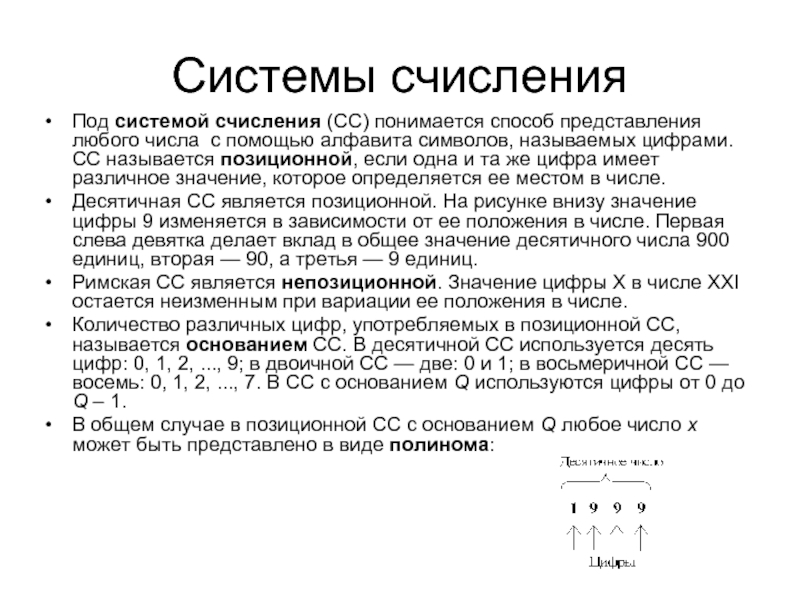- Главная
- Разное
- Дизайн
- Бизнес и предпринимательство
- Аналитика
- Образование
- Развлечения
- Красота и здоровье
- Финансы
- Государство
- Путешествия
- Спорт
- Недвижимость
- Армия
- Графика
- Культурология
- Еда и кулинария
- Лингвистика
- Английский язык
- Астрономия
- Алгебра
- Биология
- География
- Детские презентации
- Информатика
- История
- Литература
- Маркетинг
- Математика
- Медицина
- Менеджмент
- Музыка
- МХК
- Немецкий язык
- ОБЖ
- Обществознание
- Окружающий мир
- Педагогика
- Русский язык
- Технология
- Физика
- Философия
- Химия
- Шаблоны, картинки для презентаций
- Экология
- Экономика
- Юриспруденция
Software metrics using constructive cost model презентация
Содержание
- 1. Software metrics using constructive cost model
- 2. Metrics in software are of two types
- 3. What is cost estimation model ?
- 4. Cost estimation model is used to calculate
- 5. It was developed by Barry W Boehm
- 6. Basic cocomo used for relatively
- 7. Organic mode projects Used for relatively smaller
- 8. Semidetached mode projects It lies between organic
- 9. Embedded mode projects The project environment is
- 10. Table for the constant values
- 11. Intermediate COCOMO It is used for
- 12. COCOMO is used to estimate the cost
- 13. The cost estimation may vary due to
- 14. COCOMOII was developed in 1995 It could
- 15. In COCOMO II the constant value b
- 16. Helps in making decisions based on business
- 17. Constructive Cost Model was developed by Barry
- 18. [1] Farshad Faghih,” Software Effort and Schedule
Слайд 2Metrics in software are of two types .direct and indirect .
Function
Function points are used to measure the effort of the project
Cost estimation model
Introduction
Слайд 4Cost estimation model is used to calculate the effort and schedule
Cost estimation models give easy ways for risk mitigation and prepare plan for building the project .
They are calculated using cost drivers .
What are cost drivers ?
Cost drivers are critical features that have a direct impact on the project.
Слайд 5It was developed by Barry W Boehm in the year 1981.
It
It is based on size of the project.
The size of the project may vary depending upon the function points .
CONSTRUCTIVE COST MODEL
Слайд 6Basic cocomo
used for relatively smaller projects .
team size
Cost drivers depend upon size of the projects .
Effort E = a * (KDSI) b * EAF Where KDSI is number of thousands of delivered source instructions a and b are constants, may vary depending on size of the project .
schedule S= c * (E) d where E is the Effort and c, d are constants.
EAF is called Effort Adjustment Factor which is 1 for basic cocomo , this value may vary from 1 to 15.
COCOMO MODELS
Слайд 7Organic mode projects
Used for relatively smaller teams.
Project is developed in familiar
There is a proper interaction among the team members and they coordinate their work.
Bohem observed E=2.4(KDSI)1.05 E in person-months.
And S=2.5(E)0.38.
Classes of software projects
Слайд 8Semidetached mode projects
It lies between organic mode and embedded mode in
It consists of experienced and inexperienced staff.
Team members are unfamiliar with the system under development.
Bohem observed E=3(KDSI)1.12 E in person-months.
S.35=2.5(E)0And
Слайд 9Embedded mode projects
The project environment is complex.
Team members are highly skilled.
Team members are familiar with the system under development.
Bohem observed E=3.6(KDSI)1.20 E in person-months.
And S=2.5(E)0.32.
Слайд 11
Intermediate COCOMO
It is used for medium sized projects.
The cost drivers are
Cost drivers depend upon product reliability, database size, execution and storage.
Team size is medium.
Advanced COCOMO
It is used for large sized projects.
The cost drivers depend upon requirements, analysis, design, testing and maintenance.
Team size is large.
Слайд 12COCOMO is used to estimate the cost and schedule of the
COCOMO is not a perfect realistic model. Assumptions made at the beginning may vary as time progresses in developing the project.
When need arises to revise the cost of the project. A new estimate may show over budget or under budget for the project. This may lead to a partial development of the system, excluding certain requirements.
COCOMO assumes that the requirements are constant throughout the development of the project; any changes in the requirements are not accommodated for calculation of cost of the project.
There is not much difference between basic and intermediate COCOMO, except during the maintenance and development of the software project.
COCOMO is not suitable for non-sequential ,rapid development, reengineering ,reuse cases models.
LIMITATIONS OF COCOMO
Слайд 13The cost estimation may vary due to changes in the requirements,
The calculation for cost estimation accuracy is given as follows
Absolute error= (Epred - Eactual)
Percentage error= (Epred - Eactual)/Eactual
Relative error= 1/n ∑ (Epred - Eactual)/Eactual
The above results give a more accurate estimation of costs for future projects.The cost estimation model now becomes more realistic .
COST ESTIMATION ACCURACY
Слайд 14COCOMOII was developed in 1995
It could overcome the limitations of calculating
It has 3 modules
Application composition: - good for projects with GUI interface for rapid development of project.
Early design: - Prepare a rough picture of what is to be designed. Done before the architecture is designed.
Post architecture: - Prepared after the architecture has been designed.
COCOMO II
Слайд 15In COCOMO II the constant value b is replaced by 5
Effort (E) is calculated as follows
E = a * (KDSI) sf * π (EM)
Where a is constant, sf is scaling factor, EM is Effort Multiplier (7 for Early design, 17 for Post architecture).
COCOMO II calculation
Слайд 16Helps in making decisions based on business and financial calculations of
Establishes the cost and schedule of the project under development, this provides a plan for the project.
Provides a more reliable cost and schedule, hence the risk mitigation is easy to accomplish.
It overcomes the problem of reengineering and reuse of software modules.
Develops a process at each level . Hence takes care of the capability maturity model.
COCOMO II USES
Слайд 17 Constructive Cost Model was developed by Barry W Boehm, is the
The effort and schedule calculated by the model is based on two things, historical information and experience. Thus the reliability on cocomo has been increased.
The website provided by NASA on cocomo, provides a cocomo calculator with cost drivers for a complex project. Cost drivers directly have an impact on the development of the project.
CONCLUSION
Слайд 18[1] Farshad Faghih,” Software Effort and Schedule Estimation”,
[2]IAN SOMMERVILLE,” Software Engineering”, published by addision wesley, pg 514- 521.
[3]Seth Bowen, Samuel Lee, Lance Titchkosky,”Software cost estimation”,
http://www.computing.dcu.ie/~renaat/ca421/BLTCostEst.ppt
[4]Barry Boehm, “Cost Estimation With COCOMO II”, http://sunset.usc.edu/classes/cs577a_2002/lectures/19/ec19.pdf
[5]Center for Systems and Software engineering, “COCOMO II”, http://sunset.usc.edu/csse/research/COCOMOII/cocomo_main.html.
References
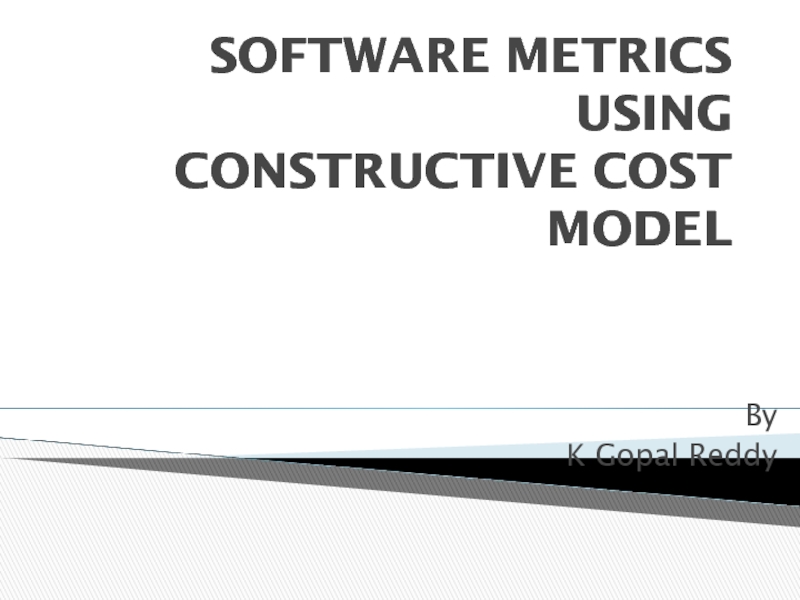
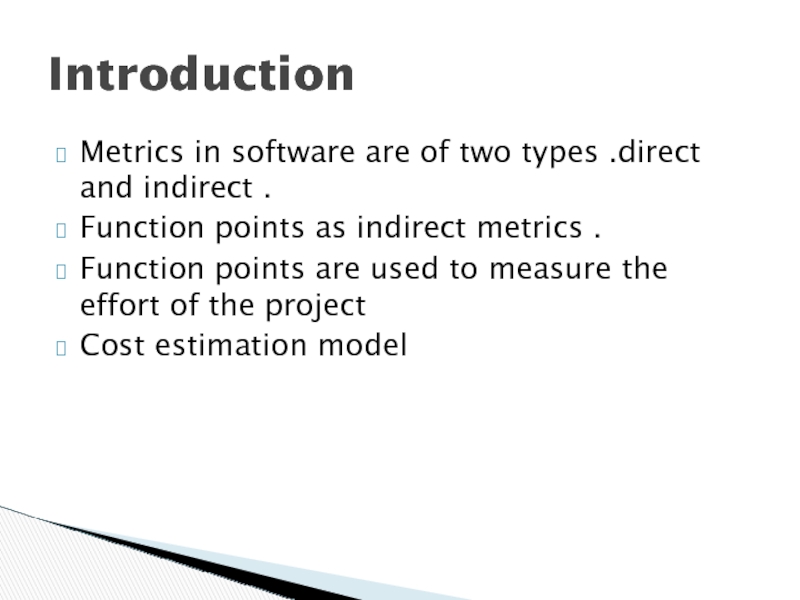
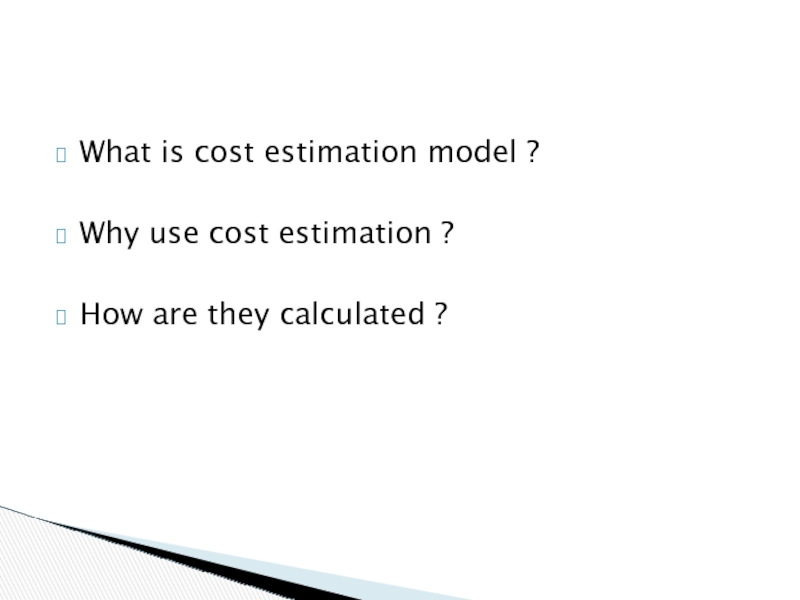
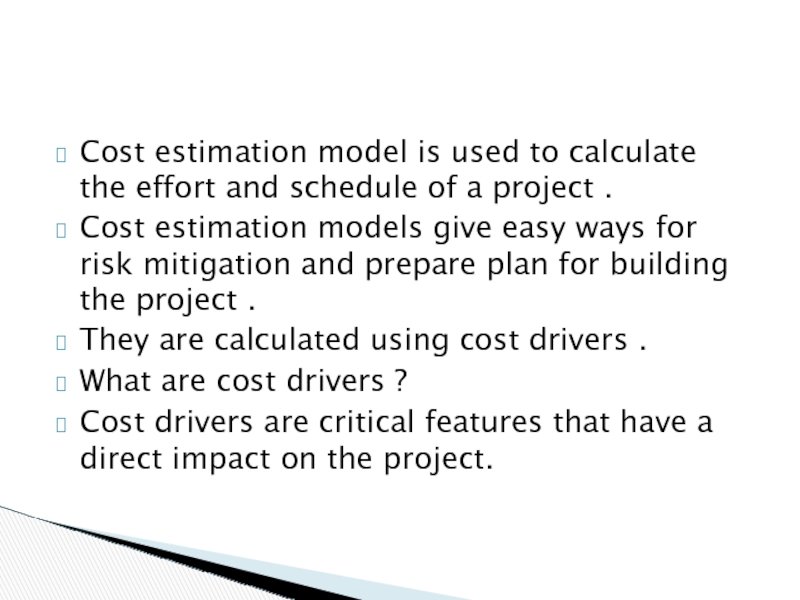
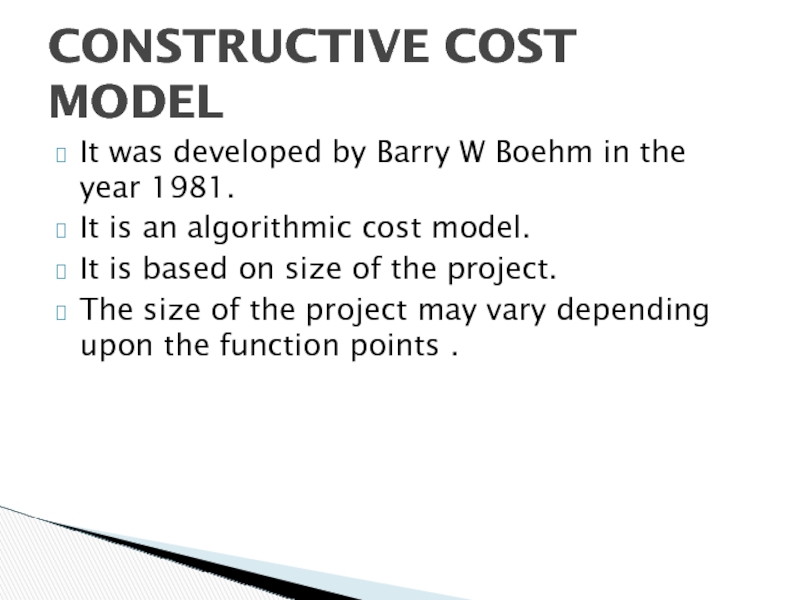
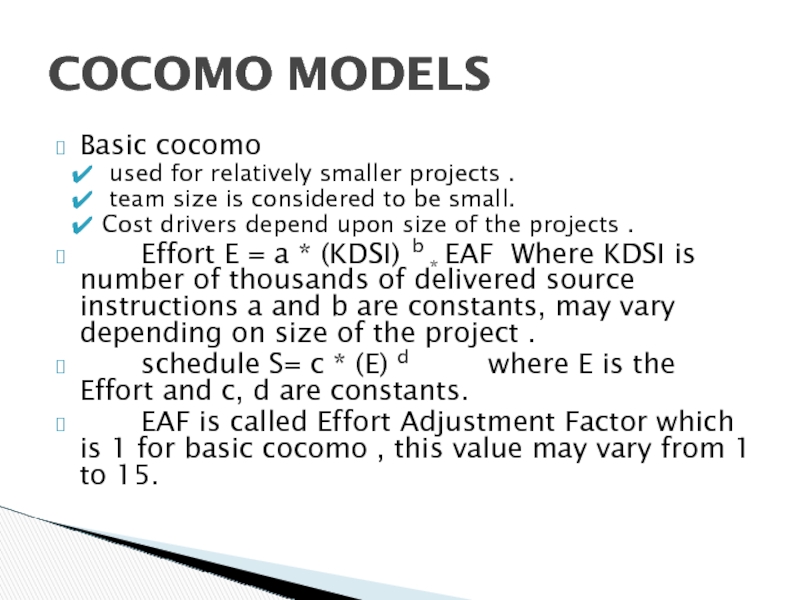
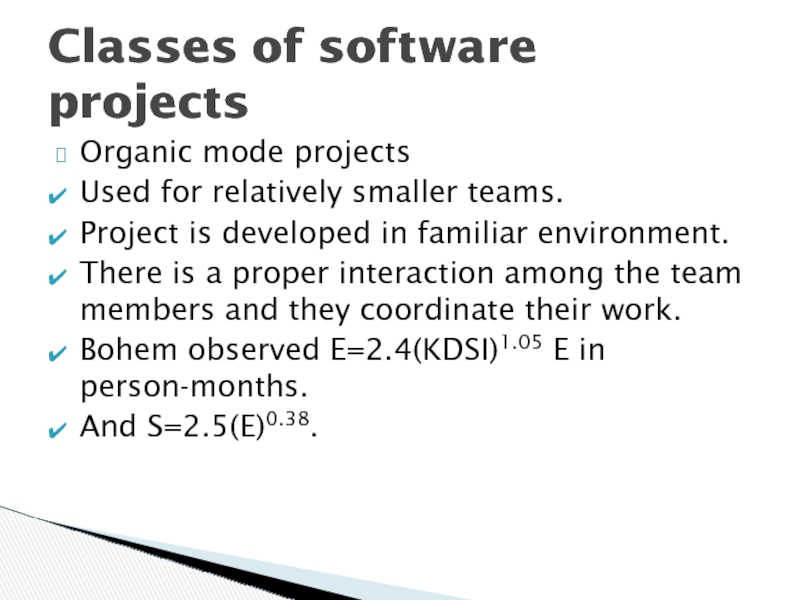
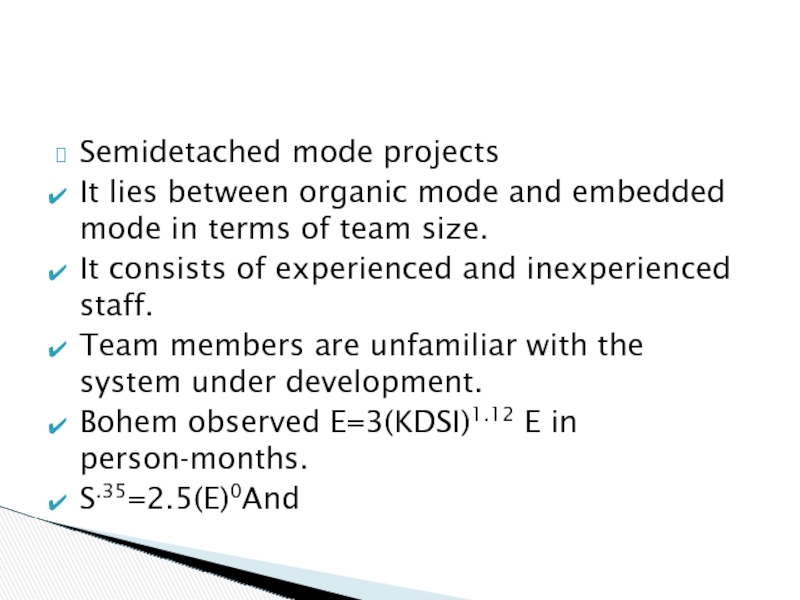
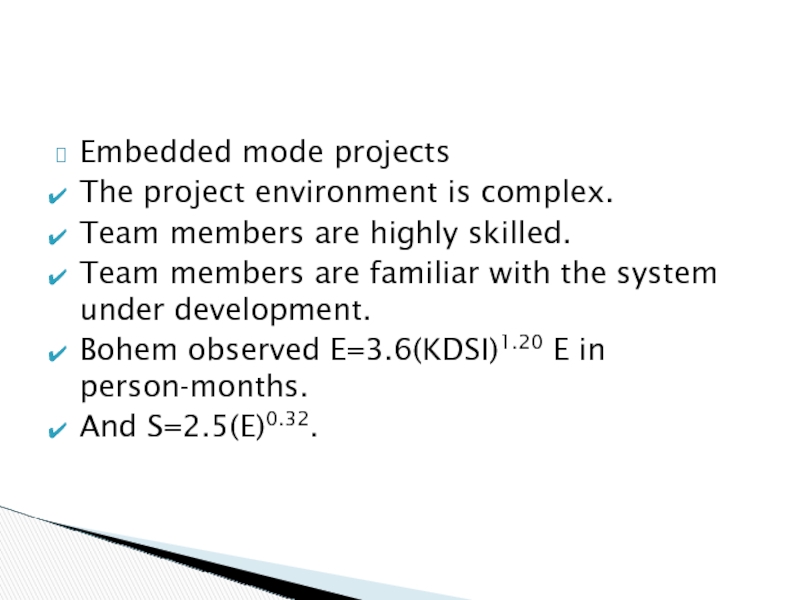
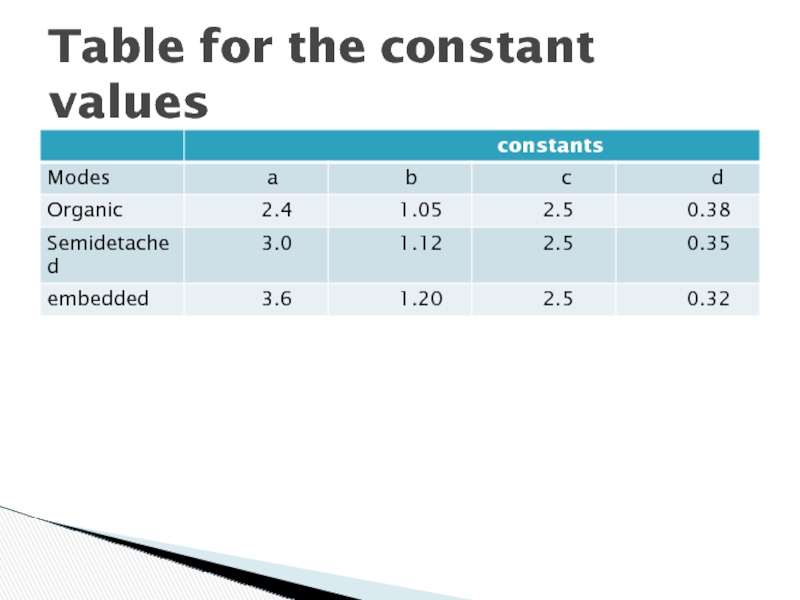
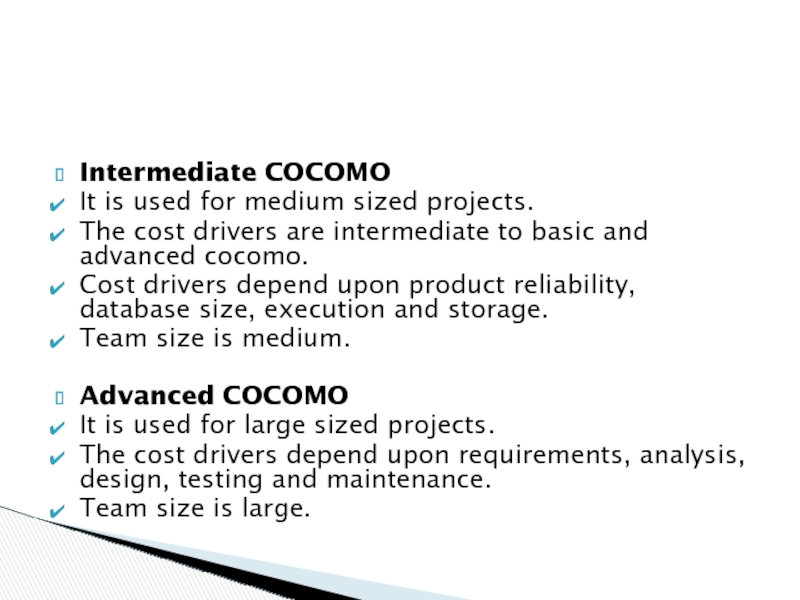
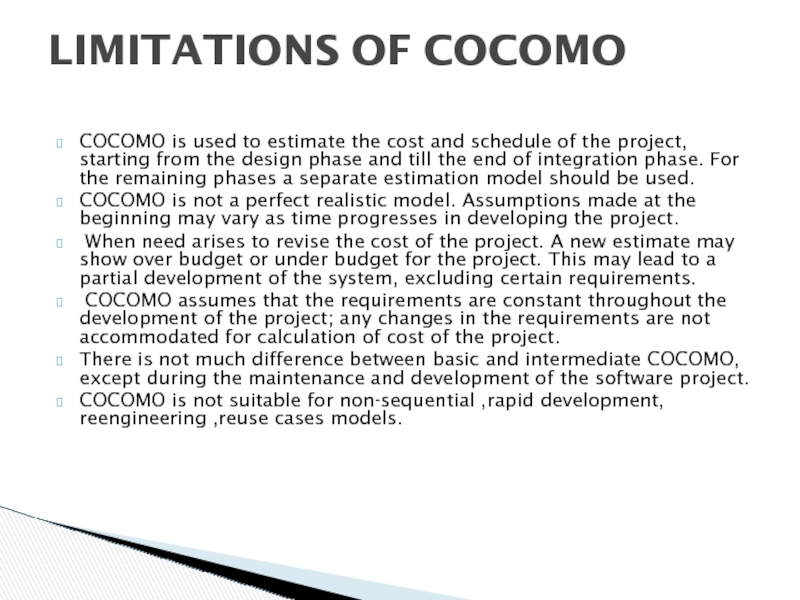
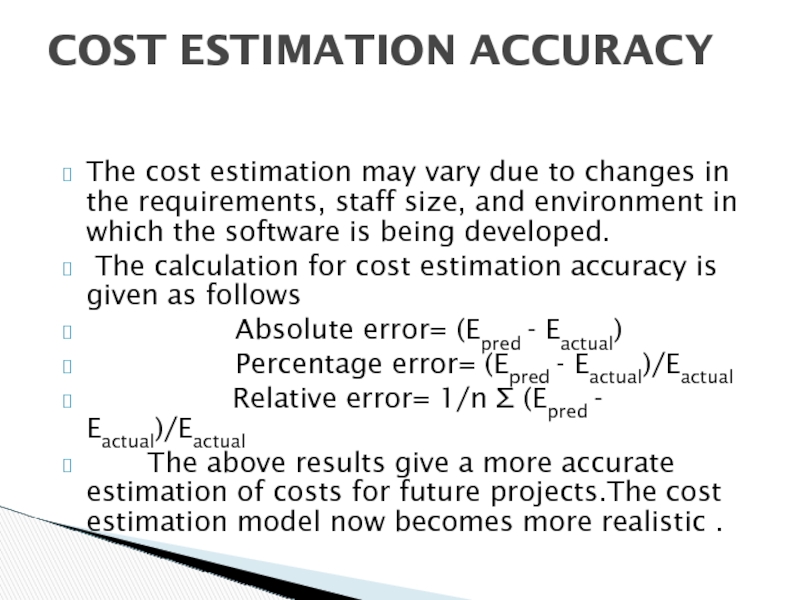
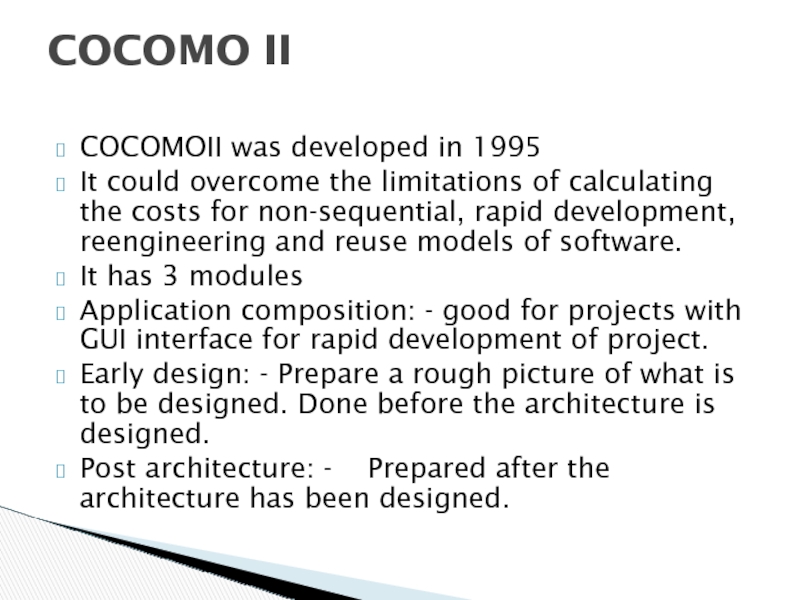
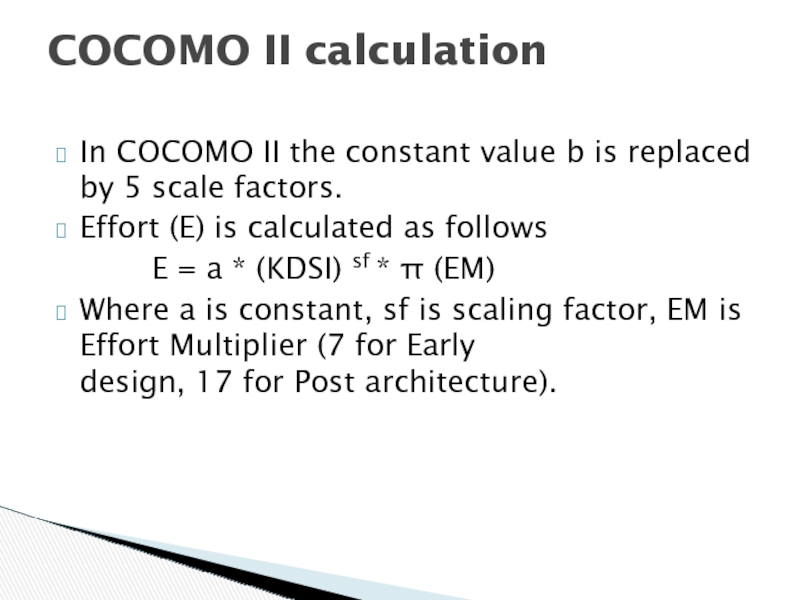
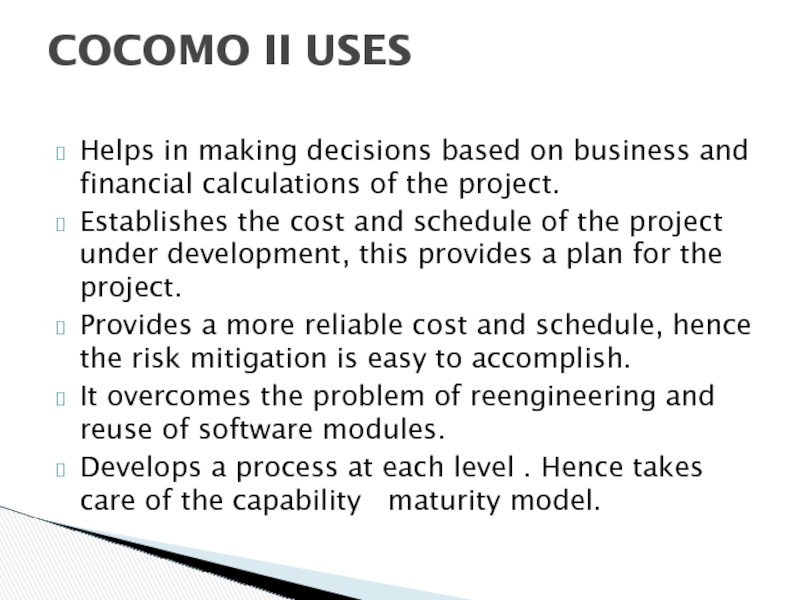
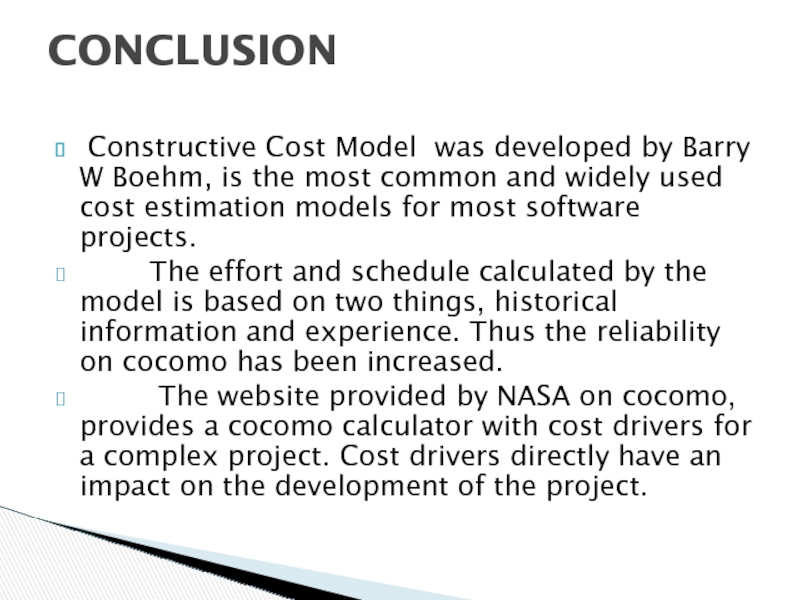
![[1] Farshad Faghih,” Software Effort and Schedule Estimation”, http://www2.enel.ucalgary.ca/People/Smith/619.94/prev689/1997.94/reports/farshad.htm[2]IAN SOMMERVILLE,” Software Engineering”,](/img/tmb/6/504827/98326fed80009081908f26d6ba8dbda6-800x.jpg)




